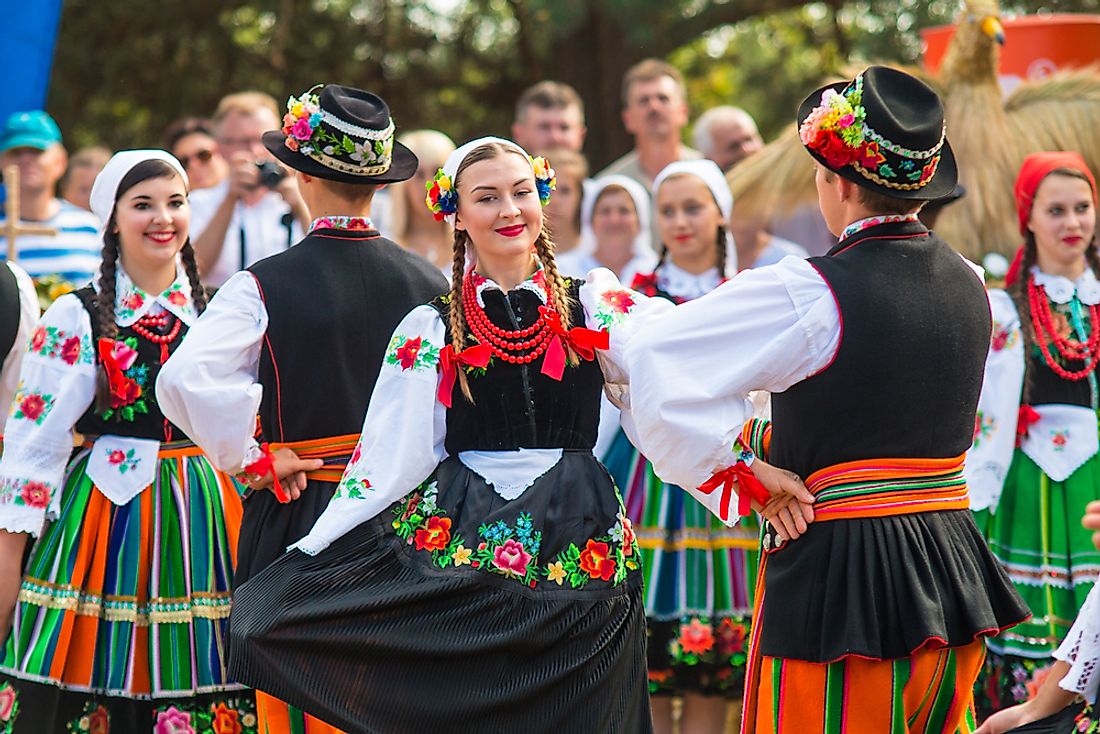Largest Ethnic Minorities In Poland

While almost 98% of the Polish population identify themselves as ethnic Poles, thousands of others call the country home as well. The Polish census of 2011 found that 1.44% of the 39 million Polish people are descendants of different ancestry. The major ethnic minorities groups recognized by the Polish government are the Germans, Belorussian, Ukrainian, Lemko, Roma, and the ethnic Jews. 39.5% of the majority of the ethnic minorities lives in Salesian, 28.3% in Opolskie Voivodship, and 11.7% in Podlaskie Voivodship. Recognized minorities in Poland take a 0.3% of the total population and are of a single ethnicity.
Germans
The Germans are the largest ethnic minorities in Poland with a population of about 49,000. However the number is estimated to be higher, but the small turn up is due to the complication of multi-ethnicity identity and concealment during the communist regime. Most of the German minority, 92.9%, lives in Opole Voivodeship where a trace of the German language exists. The case is similar in schools where no single school in Poland is entirely German though some German-polish schools exist. Most of the German minorities practice Roman Catholicism and Lutheran Protestantism. The Germans started migrating to Poland during the medieval period. By the Middle Ages, their number was substantial in regions of Upper Silesia, Posen, and Pomerelia. After the WWI, most Lutheran Germans remained east of the Curzon line. The number dwindled during the second Polish Republic. The ethnic Germans sided with Germany in the prewar period and were involved in the massive massacre of the 450000 Poles and Jews during Adolf Hitler reign.
Belorussian
The Belorussians are the second largest ethnic minority group in Poland with a population of about 37,000 despite claims that the number maybe 3 or 4 times higher. Most of them live in Podlaskie Voivodeship and the active assimilation process to the Polish culture in the recent decades facilitated the decline. In the late 18th century, Poland took control of some eastern territories of Ruthenians, the ancestors of Belarusians. During this period many of the people were Polonized and lost the Belarusian identity. By 1921 under the Second Polish Republic their number was more 1 million. They had political influence largely in the lower chamber of the Polish Council. Schools operating entirely in The Belarusian language opened up, but since the government failed to support them, they eventually closed down. The lack of support from the central government led to years of oppression by the Polish government with no policy of protecting the minorities. The Polish aligned with the Nazi rule in Belarus regions, while the Soviet Union executed the war refugees.
Ukrainian
The presence of Ukrainians dates back to the late middle ages. At this time Poland ruled the Galicia and Western Volhynia, which the Ukrainian occupied. The Polish dynasty introduced the Ruthenian culture and oppressed the Orthodox faith. For years the Ukrainians were oppressed and forced to assimilate the Polish way of life. This annexation of Ukraine regions facilitated Polanization, and the people lost their identity. Today the relationship between the Ukrainians and the Poles is way calmer, and they coexist peacefully. However, the Polish government has restricted migration of the minorities group in the region. Even so, the Ukrainians have easy access to immigration permits though their number is about 36,000.
The Lemko of Poland
This minority ethnic group has faced a difficult time in Poland. Before the 20th century, the Lemko lived in the Lemkovyna, southeast of the country. When the interwar era erupted, the Lemko were forced to identify as either Ukrainian or Polish. Towards the end of the war, a misunderstanding occurred, and the Lemko identified as Ukrainian cooperatives leading to massive depopulation of villages hence scattering the Lemko. The effect lasted to this today. The scattering of the Lemko led to culture loss. Fear of ridicule of identifying as a Lemko facilitated the loss of culture. The fact that the community was once torn between two nationalities led to a lack of a national self-identity; the Polish assimilated them quickly. Presently, the Commonwealth Poland protects the rights of its citizens. The different ethnic groups coexist peacefully with each other.
Largest Ethnic Minorities In Poland
| Rank | Ethnic Minority Group | Estimated Population in Contemporary Poland |
|---|---|---|
| 1 | German | 49,000 |
| 2 | Belorussian | 37,000 |
| 3 | Ukrainian | 36,000 |
| 4 | Roma | 12,000 |
| 5 | Russian | 8,000 |
| 6 | Ethnic Jewish | 7,500 |
| 7 | Lemko | 7,000 |







